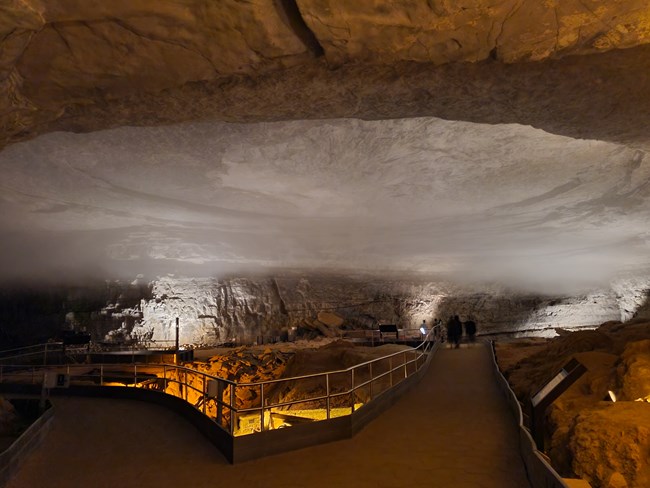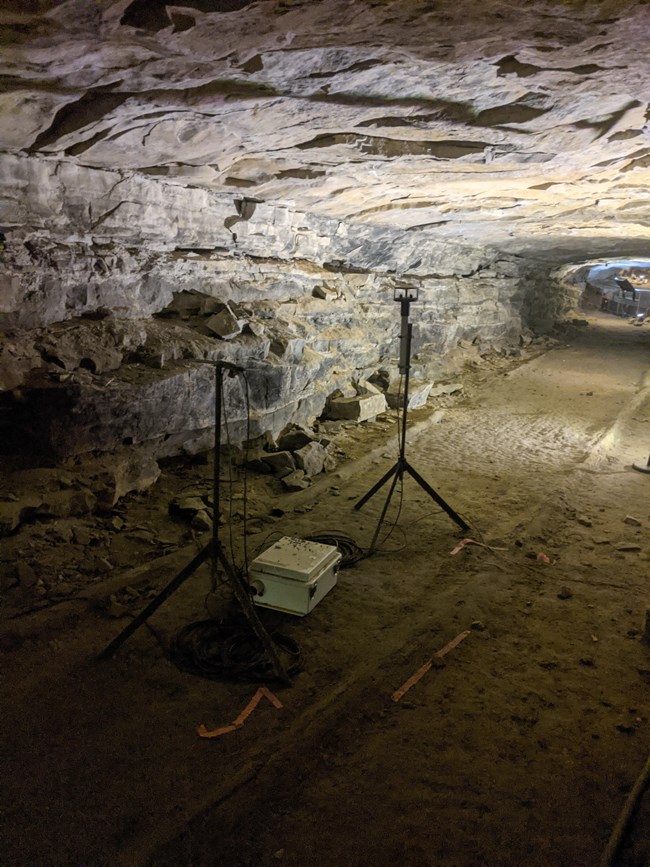Cave Air QualityMammoth Cave and surrounding area caves have natural airflow patterns that have allowed for tourism, research, and exploration for centuries. Over this time, human activity has changed airflow in some areas. The park continues to monitor and mitigate these changes and their impacts in order to protect the ecosystem, cultural history, and visitors of Mammoth Cave. 
NPS Photo/ Rachel Kem Cave Airflow and TemperatureAir within the Mammoth Cave system and other caves in the park is in a constant state of movement and exchange. This exchange is caused by weather and climactic conditions on the surface and is driven in the cave by a process known as convection. Human ImpactsOver the course of recent history, openings into Mammoth Cave and other caves in the park have seen several human modifications. These modifications have resulted in altered air temperature and airflow patterns in the caves. 
NPS Photo/ Tegan Sorensen MonitoringPark scientists continue to collect data on air temperature and airflow patterns in Mammoth Cave. A variety of cave meteorology data, including air temperature, relative humidity, and wind speed/direction is collected at multiple locations throughout the Historic Section of Mammoth Cave. RadonLike most caves, the caves in the region are formed in rock layers that contain trace amounts of uranium. As the uranium breaks down a process called radioactive decay occurs. This process produces a gas known as radon gas, which is released from the rock into the cave passages. Radon gas can cause health risks, such as lung cancer when inhaled over a long enough period of time and in sufficient quantity.
The results of that monitoring are used to ensure that the health of employees is not put at risk in the execution of their duties. Surface Air QualityAir quality on the parks surface is actively monitored by the National Park Services Air Resources Division (ARD). The ARD monitors current and long-term trends of air quality throughout the National Park System. To learn more about the air quality on the surface of Mammoth Cave National Park, view the park air profile complied by the ARD. |
Last updated: July 26, 2023
